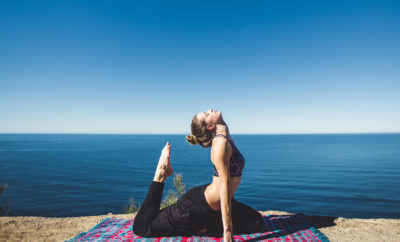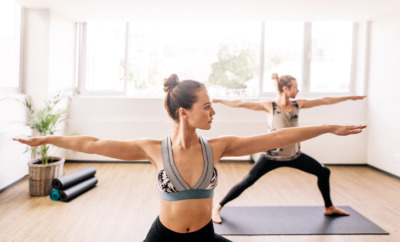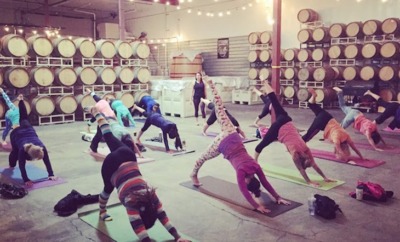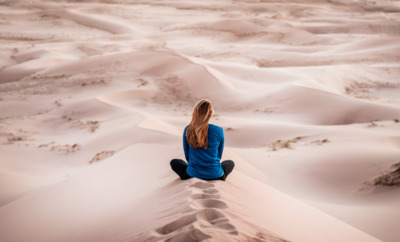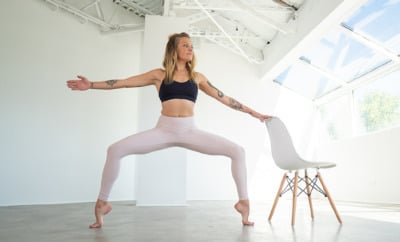Is Your “Yoga” Style Really Yoga?

is your yoga really yoga
As soon as I tell someone I practice yoga, inevitably the first question asked is, “What kind of yoga do you do?” or “What style of yoga do you practice?”
And I really struggle for an answer. I struggle because people generally don’t really understand the question they are asking.
I usually say, “Well, I practice yoga.”
Some people actually get it — they get what I am trying to say. But some don’t. To them, my response can come off as evasive, or worse, even arrogant.
If asked to explain, I tell them I practice Hatha Yoga.
Once after hearing this, someone actually said to me, “Oh! My grandmother used to practice Hatha Yoga!” But mostly it’s, “Oh, when I first started practicing yoga, I took classes in Hatha. It’s the slow yoga, right?”
The Many Styles of Yoga
In our yoga community, a lack of understanding of the various schools and traditions of yoga is common. The conversation about whether there is a path of pure yoga is often poorly discussed.
Just as Catholics and Protestants have historically argued about which path of Christianity is the true one, the different practices of yoga (for example Ashtanga or Iyengar Yoga, each having enthusiastic yogi followers) each proclaim that their path is the true one.
What people don’t realize is many contemporary “styles” of yoga ultimately become ways to further the marketing efforts of yoga teachers who create them. Unfortunately, many of these styles have little connection to the historic tradition of yoga and were invented by individuals who have never had a real teacher, master or guru to guide them.
The engaging documentary Kumare addresses this by asking, “Where does yoga come from?” and “What is the proper way to practice yoga?” People who are looking for a yoga class in which to stretch their bodies generally never ask these questions.
Asking questions like this is especially important if you want to deepen your practice and attain what yoga truly promises.
Another recent documentary called “Who Owns Yoga?” discovers numerous distilled and unrecognizable versions of yoga that were created purely for marketing purposes. But people buy it as a practice of yoga.
As we navigate these complicated waters, it is important to remember there are many diverse practices in yoga. In order to understand why there are many practices, one needs to first understand what yoga is.
A Brief Yoga History Lesson
Swami Rama teaches the following: “What does yoga science mean to you? When people talk about yoga they often think it has something to do with the physical being only. Yoga is a science that deals with body, breath, mind, soul and ultimately, the universe itself. It is both practical and theoretical.”
First and foremost, yoga is a science that will lead an aspirant to their ultimate truth and help them fulfill the purpose of their life.* The ancient yogi’s laboratory was the Himalayan mountains and their instruments were their bodies, voices, nature and sound. On the road to enlightenment, they had three guiding principles.
- To overcome their fears.
- To maintain awareness of the Lord absolute.
- To live and fulfill the purpose of their life.
From these principles, many paths have emerged on the road to achieve this goal. And thus, Hatha yoga has existed for nearly 1500 years while other forms of yoga can be traced to have originated even earlier.
7 Styles of Yoga:
These are some of the real paths or styles of yoga that have been practiced and upon which the yoga tradition is based.
1. Mantra Yoga
The word “mantra” literally means, “to free the mind.” This science embraces and utilizes the power of sound to free the mind of distractions and enable it to become one-pointed and focused.
Through mental and sometimes verbal repetition in meditation, the power of the mantra will unfold for each individual. A personal mantra is given through initiation from a teacher.
2. Bhakti Yoga
Bhakti Yoga is the path of intense devotion of love. This path has become increasingly popular by the emergence of many singers and performers now offering concerts whereby people gather to sing and chant. But this style of yoga has much more significance.
It asks us to devote every action, every thought and every word spoken as an offering of love to the Lord of life. Contemporary examples of people in the west who have lived this path are notable people like Mother Teresa and Pope Francis.
3. Laya Yoga
Laya means to dissolve. Our goal is to dissolve all of our negative tendencies (and ultimately even the good ones) so that they no longer shape our character and thus our life. The work is typically practiced in the domain of the chakras and their respective practices.
4. Kriya Yoga
Kriya means action and is a dynamic form of meditation whereby energy is used to purify and transform consciousness. This form of yoga has become known because of Paramahansa Yogananda who is famous for writing the book, Autobiography of a Yogi.**
5. Karma Yoga
Karma also means action and thus Karma Yoga is the path of action, but more specifically the path of selfless action. The yogi strives to live their life in service to mankind and greases all of their actions with love and devotion.
Many yogis today dive into this practice through volunteerism and charities, or by living in Ashrams and offering their service to the community.
6. Kundalini Yoga
The path of Kundalini Yoga should not be mistaken with the popular name brand of “Kundalini Yoga” that is offered today by Yogi Bhajan. You can typically recognize these teachers because of the white turbans they wear. They usually dress only in white.
And while this yoga style is really great, it should not to be confused with the tradition of Kundalini Yoga as passed down by the Himalayan sages.
Kundalini is our karma that keeps us stuck and inhibits our potential from rising up. Kundalini is that force within us that separates ourselves from the divine or the potential of who we can be in this world.
The practice of Kundalini Yoga awakens this potential so we can fulfill the purpose of our life and who we can be in this world. If you would like to learn more about the path of Kundalini and this style of yoga, read the book called Kundalini by the Bihar School.
7. Hatha Yoga
I have saved this path for last because I feel it represents most of the practices offered today, and this style of yoga can also be the most confusing to understand.
When I first started to teach yoga, Hatha was associated with “old people’s yoga,” a style of yoga that only older people practiced, or a style of yoga that was only for beginners.
Hatha yoga emerged somewhere around 500 AD through a group of yogis who called themselves “The Nath.”
They did not subscribe to the idea that enlightenment could only be attained through the mind (Pantanjali Yoga, aka the Yoga Sutras, is inherently a practice that is achieved through the utilization of the mind), and said that we could achieve that goal through piercing the subtle energies of the body.
The body was the manifestation of the divine and, through understanding and manipulating the body, we could get closer to the divine.
In the last century, Hatha has emerged as the most popular style of yoga due to a man named Krishnamacharya who popularized it in the early 20th century. It is said that he was a direct descendant of the Nath.
From him, four students emerged who popularized their own unique “styles” of yoga in the west and thus started their own name brands of yoga: BKS Iyengar who started Iyengar Yoga, Pattabi Jois who started Ashtanga Yoga, TKV Desikachar, (Krinamacharie’s son) who started Vinyasa Yoga, and Indra Devi who became widely popular in the 50’s as a teacher to the Stars.
From each of these styles, thousands of schools have emerged offering their own unique spins and teachings.
Whichever Style of Yoga, Your Life Will Forever Change
If you are new to the world of yoga, your goals are usually simple: you just want to stretch your body or have better health and wellness. But as you grow in your practice and the fire of yearning begins to burn, you will want to learn more. You will want to know more.
Dedicate yourself to finding not only a good teacher, but one that will help you to attain the goal and purpose of your life. Seek a teacher with knowledge who deeply understands these teachings.
Once you find the right teacher, they will help you unleash a force within that will not only transform your own life but will transform the world around you.
*From Swami Rama in his book The Royal Path
** There is a film that was released in November, 2014 about Yogananda called Awake: The Life Of Yogananda. There are very few yoga teachers who have been initiated into the practice of Kriya Yoga. You can learn more about Kriya Yoga from Yogananda’s Self-Realization Fellowship.
Please share with us below the “style” of yoga you practice and how it has helped you transform your life and the world around you.


This Month's Letter
From the Editor
Monthly motivation and food for
thought from our founder.

